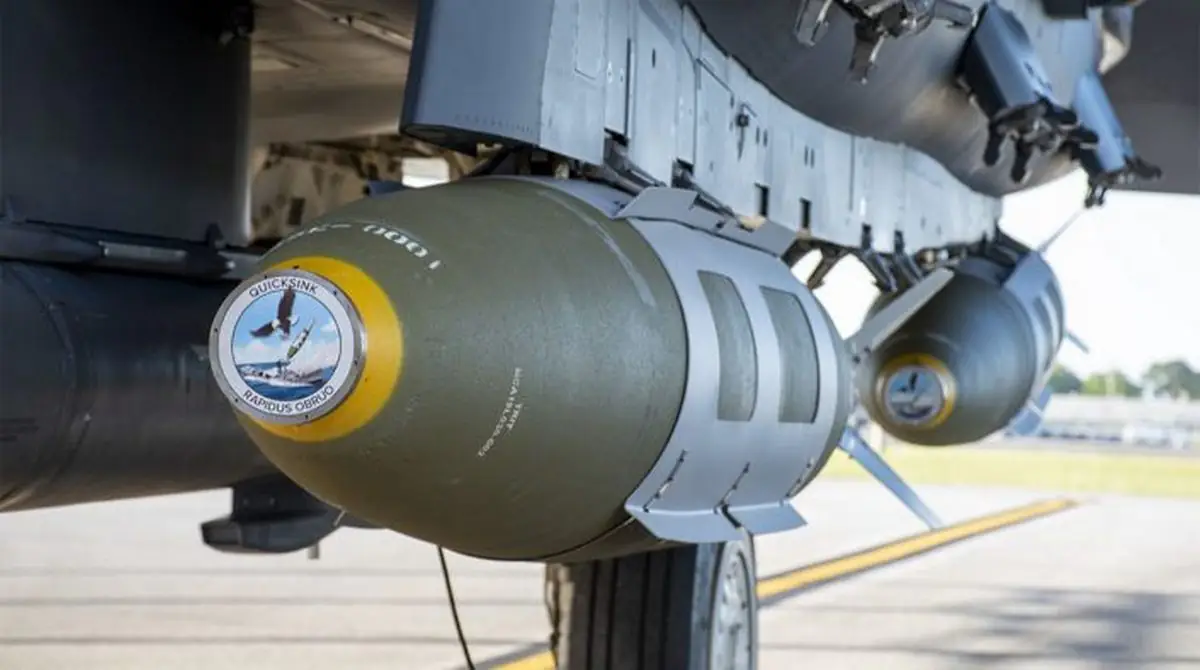The B-2 Spirit strategic bomber has been upgraded to carry and deploy up to 80 modified 227-kilogram QUICKSTRIKE bombs, designed specifically for engaging maritime targets. On June 4, 2025, the U.S. Air Force and the Air Force Research Laboratory (AFRL) announced the successful testing of the updated QUICKSINK munition, based on the 227-kilogram GBU-38 JDAM. The tests took place at Eglin Air Force Base, over the Gulf of Mexico, with a stealth B-2 Spirit from Whiteman Air Force Base participating in the trial.

While the official test date hasn’t been disclosed, photos published by DVIDS confirm that the event took place on April 22, 2025. One of the images shows the 393rd Bomb Squadron crew loading the modified munitions onto the aircraft.
Previously, during the RIMPAC 2024 exercises, the B-2 was already seen using 907-kilogram GBU-31/B JDAMs in a SINKEX (sinking exercise). Earlier versions of the QUICKSTRIKE had only been tested on F-15E Strike Eagles back in 2021 and 2022. With this latest update, the project now also involves the Air Force Test Center (AFTC) and the 53rd Wing. According to AFRL, the new capability is aimed at improving the Air Force’s ability to quickly respond to maritime threats.

Colonel Dan Legowski emphasized that the 907-kilogram version of QUICKSTRIKE offers a cost-effective option for strengthening maritime strike capabilities. With the B-2’s advanced targeting systems, commanders now have more flexibility in planning and executing missions at sea. These developments are informed by lessons from recent operations in the Black and Red Seas, where drones and missiles have become increasingly common on the battlefield.

The B-2 bomber can carry up to 80 JDAMs, with a total payload cost of around $2 million. The QUICKSTRIKE guidance kit itself is priced at approximately $200,000 per unit, but that figure could drop to as low as $50,000 with large-scale production. In comparison, a single LRASM missile costs between $2 and $3 million.
The B-2 can operate in coordination with tactical aircraft like the F-35B, F/A-18E/F, F-15E, and F-15EX, all of which are capable of carrying LRASMs. By using QUICKSTRIKE munitions against escort ships in a carrier strike group, higher-value LRASMs can be reserved for more critical targets. The B-2 also benefits from low observability and passive targeting, making it less vulnerable to detection during maritime strike missions.
In 2022, the Air Force Research Laboratory (AFRL) confirmed the existence of a new QUICKSTRIKE guidance system that combines radar and an imaging infrared (IIR) seeker. After release, the JDAM uses GPS to approach the general target area, with the onboard sensors then guiding the munition to strike the vessel precisely, detonating below the waterline. Footage from 2022 tests showed a successful strike on a target ship.
Boeing is also developing the Powered JDAM (PJDAM), which features a Kratos TDI J85 air-breathing engine. Depending on its configuration, this system can extend operational range to 300 or even 700 nautical miles, making it suitable for striking targets beyond anti-access/area denial (A2/AD) zones. The PJDAM has been tested in three variants: a baseline version, a QUICKSTRIKE-powered model, and one optimized for use against maritime logistics vessels. It can also be outfitted with a fuel tank for extended loitering or a generator to support in-flight data transmission.

QUICKSTRIKE and PJDAM are designed to complement existing systems like LRASM and NMESIS, expanding the range of tools available for engaging enemy vessels. This broader arsenal increases the flexibility and effectiveness of U.S. maritime operations, offering commanders more options when responding to naval threats.
Source: TheAviationist









